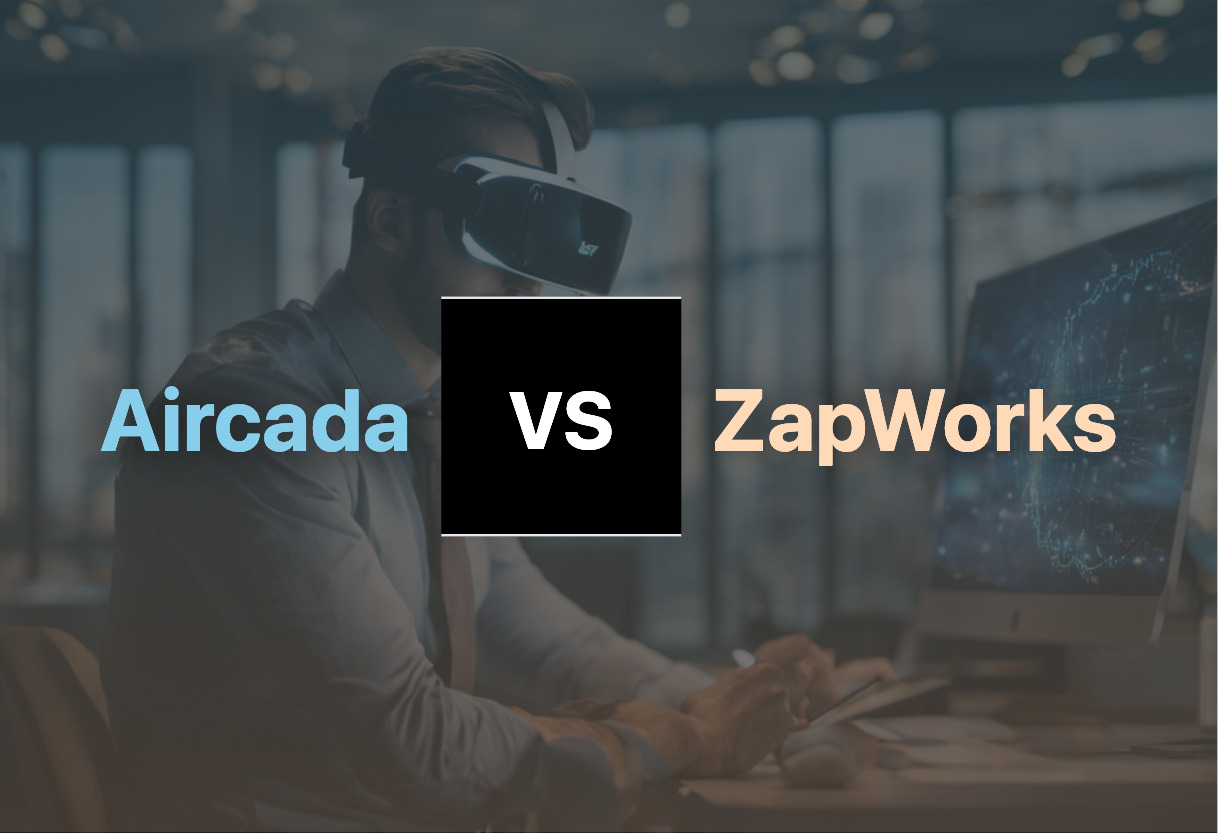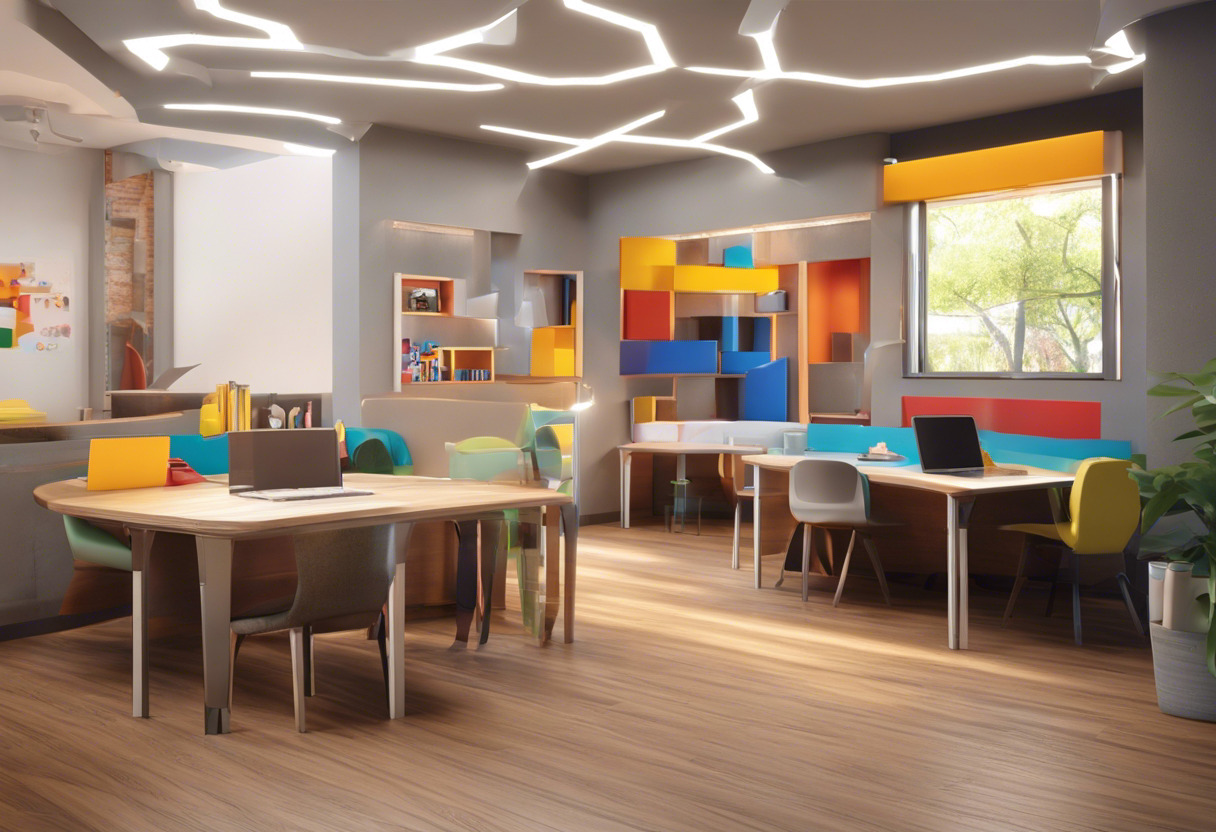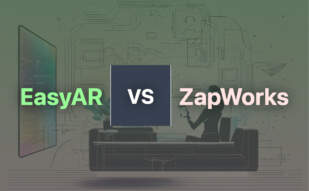For businesses and AR enthusiasts desiring swift, no-code AR content creation, Aircada proves superior, offering a highly intuitive automatic graphic creation and secure team collaboration feature. Nonetheless, ZapWorks serves well for advocates of user-friendly, no to low-code web AR experiences, despite reports of limited features and usability complexities.

Key Differences Between Aircada and ZapWorks
- Coding: Aircada provides a no-code platform, ideal for swift AR content creation. ZapWorks offers no-code, low-code, and custom coding options.
- User Experience: Aircada prioritizes a frictionless user experience with highly intuitive automatic graphic creation. ZapWorks has received feedback on its limited features and usability complexity.
- Collaboration: Aircada supports team collaboration to streamline AR development. ZapWorks lacks a collaborative feature.
- Price: Aircada offers highly competitive pricing beginning with a free edition. ZapWorks demonstrates variability in pricing catering to personal, business, and educational use.
| Comparison | Aircada | ZapWorks |
|---|---|---|
| Target Audience | Marketers, artists, 3D designers, OEMs and industrial equipment | Designers, developers, marketers |
| Specialization | AR web applications | WebAR experiences |
| Capabilities | 3D model scanning & uploading, AI-driven AR creation | World tracking, image tracking, face tracking, 3D mesh |
| Device Compatibility | Mobiles, tablets, lidar-equipped gadgets | Web |
| Features | Realistic 3D rendering, geometry occlusion management, Spatial AI | Enterprise-scale deployment, ARKit & ARCore Integration, Sketchfab integration |
| Integration | With other software and platforms | With Sketchfab, ARKit & ARCore |
| Pricing | Free to $79+ per month | Varies for personal, business, educational use, and app embed. |
What Is Aircada and Who’s It For?
Aircada is a no-code platform intended for the creation, deployment, and viewing of AR content. Founded by brothers Sean and Wylie Chenoweth in 2020, this technology is designed for businesses of all sizes and AR enthusiasts alike, including marketers, artists, and 3D designers. Even equipment manufacturers and industries can reap its benefits with guided procedures and training.
Thanks to its AI-driven algorithms, 3D model scanning capabilities, and high compatibility, Aircada offers swift and intuitive AR creation experiences, making it a promising player in the AR software market.

Pros of Aircada
- Device agnostic: compatible with a variety of gadgets
- Swift and intuitive AR creation capabilities
- Prioritizes security
- Competitive pricing and features
Cons of Aircada
- Relatively new in the tech market
- Doesn’t include advanced coding capabilities
What Is ZapWorks and Who’s It For?
ZapWorks is a comprehensive AR ecosystem that offers custom code, low-code, and no-code options for creating engaging WebAR experiences. This tool caters to designers, developers, and marketers alike. Available for personal, business, and educational use, it expands AR opportunities to a broad user base.
Its intuitive design tools, such as Zapworks Designer and Studio, provide powerful capabilities to prototype, innovate, and boost sales or marketing initiatives. It supports world tracking, image tracking, and face tracking, catering to various AR application requirements. Despite minor drawbacks, ZapWorks’ ease of use and efficient object tracking place it highly in the AR arena.

Pros of ZapWorks
- Caters to a wide range of users, from designers to marketers
- Offers versatile tracking capabilities
- Easy to use and requires minimal coding
Cons of ZapWorks
- User experience is reported to be subpar
- Limited creative freedom
- Features like world tracking are reported to be lacking
The Showdown: Aircada vs ZapWorks
The coliseum of AR creation platforms is in full swing. In one corner, we have Aircada. In the other, ZapWorks. So, who wins? Let’s find out.
The No-Code Enthusiasts
These newcomers to AR want simplicity and ease-of-use. With a seamless drag-drop interface that takes seconds to deploy, Aircada is their tool of choice. Couple this with extremely competitive support and regular feature updates, we cannot give this round to anyone else.

Seasoned AR Developers
For this group, software versatility and humbler pricing have weight. ZapWorks takes this round thanks to its depth of features including world and image tracking, plus an affordable package tailored for education use.

The AR-Centric Businesses
For businesses eyeing AR integration, security, device compatibility, and pricing are key. Here, Aircada’s device agnostic model, enterprise-grade encrypted communication, and unbeatable free-trial offer stand tall.

Education & Training Scope
ZapWorks shines here with its robustness in AR educational content creation. Its deep-rooted feature sets for classroom learning & training make it the premier choice for educators.

Pioneering ease-of-use, Aircada is the go-to for AR novices and businesses prioritizing cost-efficiencies and secure integrations. On the other hand, Zapworks triumphs with its robust features and adaptability, thus appealing more to professional developers and the education sector.
Logan Bellbrook
Content writer @ Aircada with a knack for nature & AR/VR/XR. Blogging the intersection of tech & terrain.





